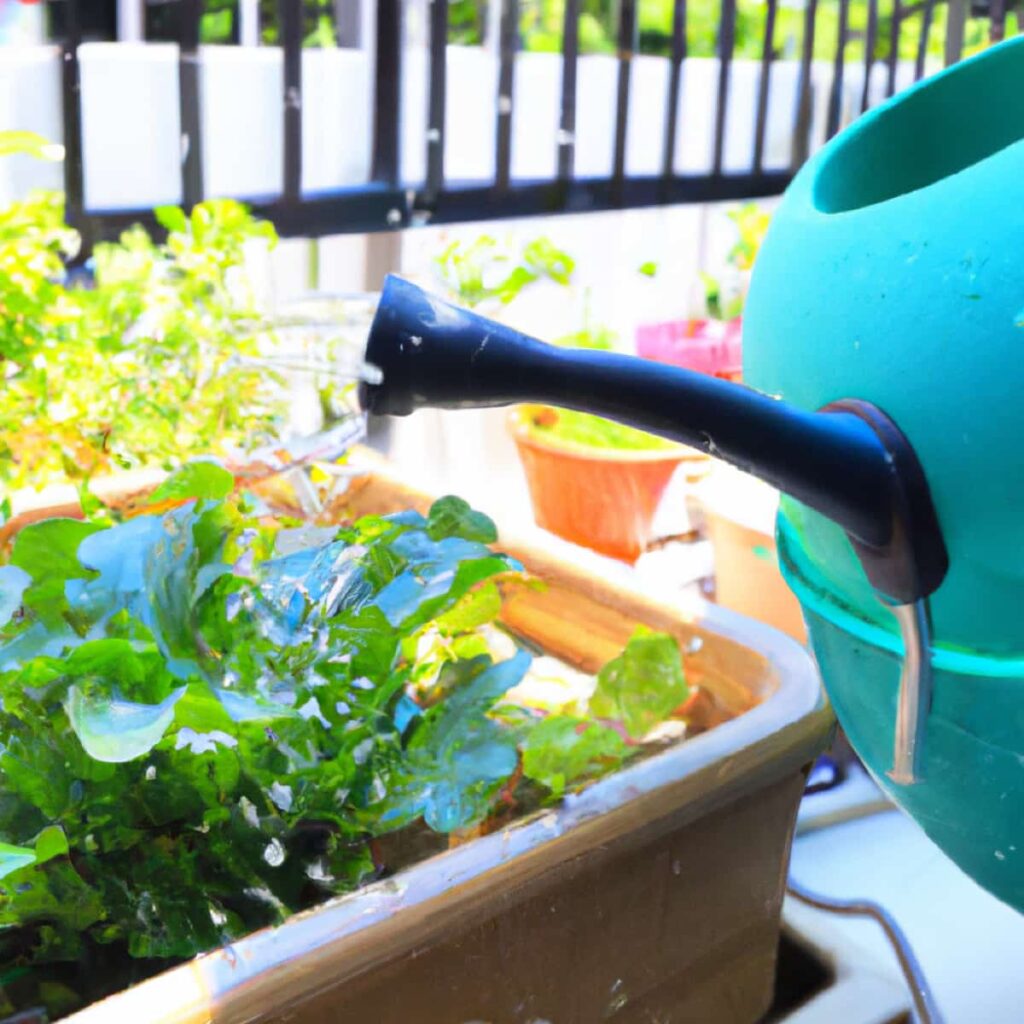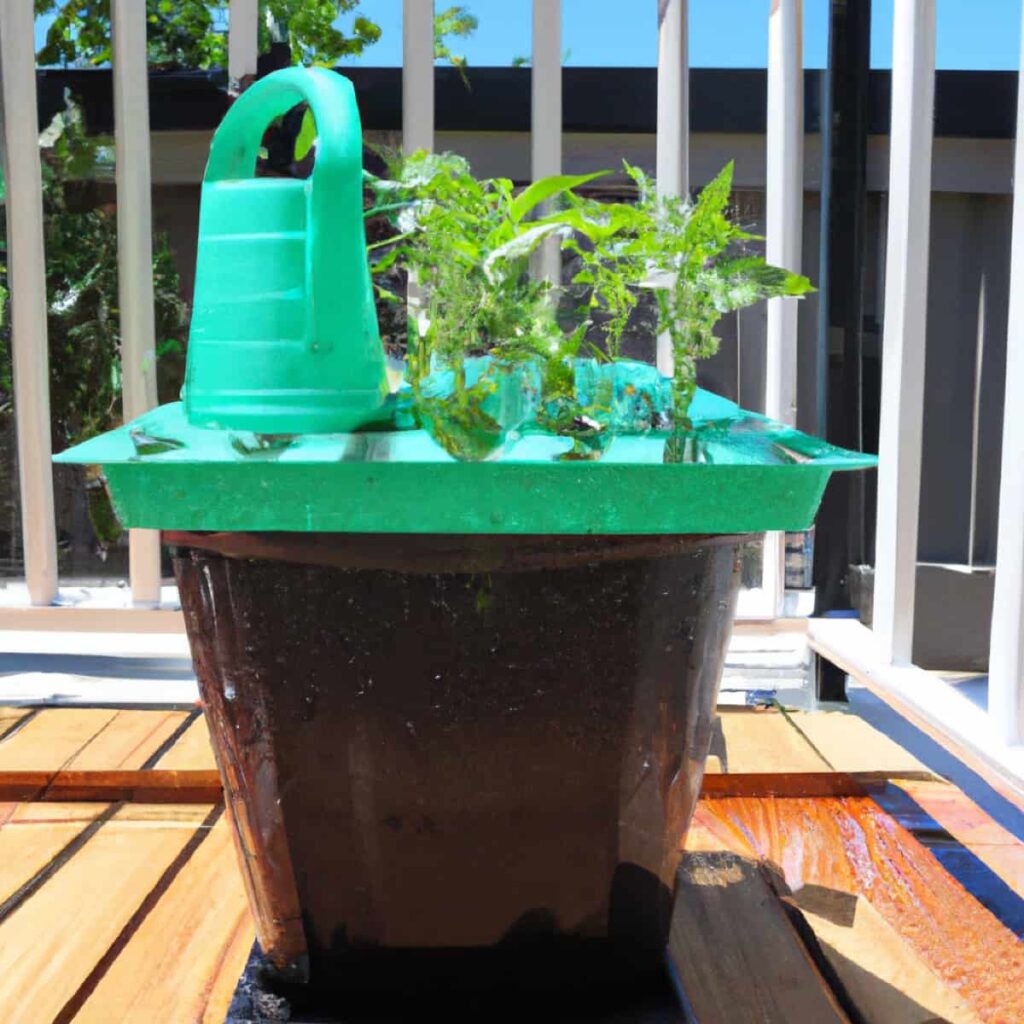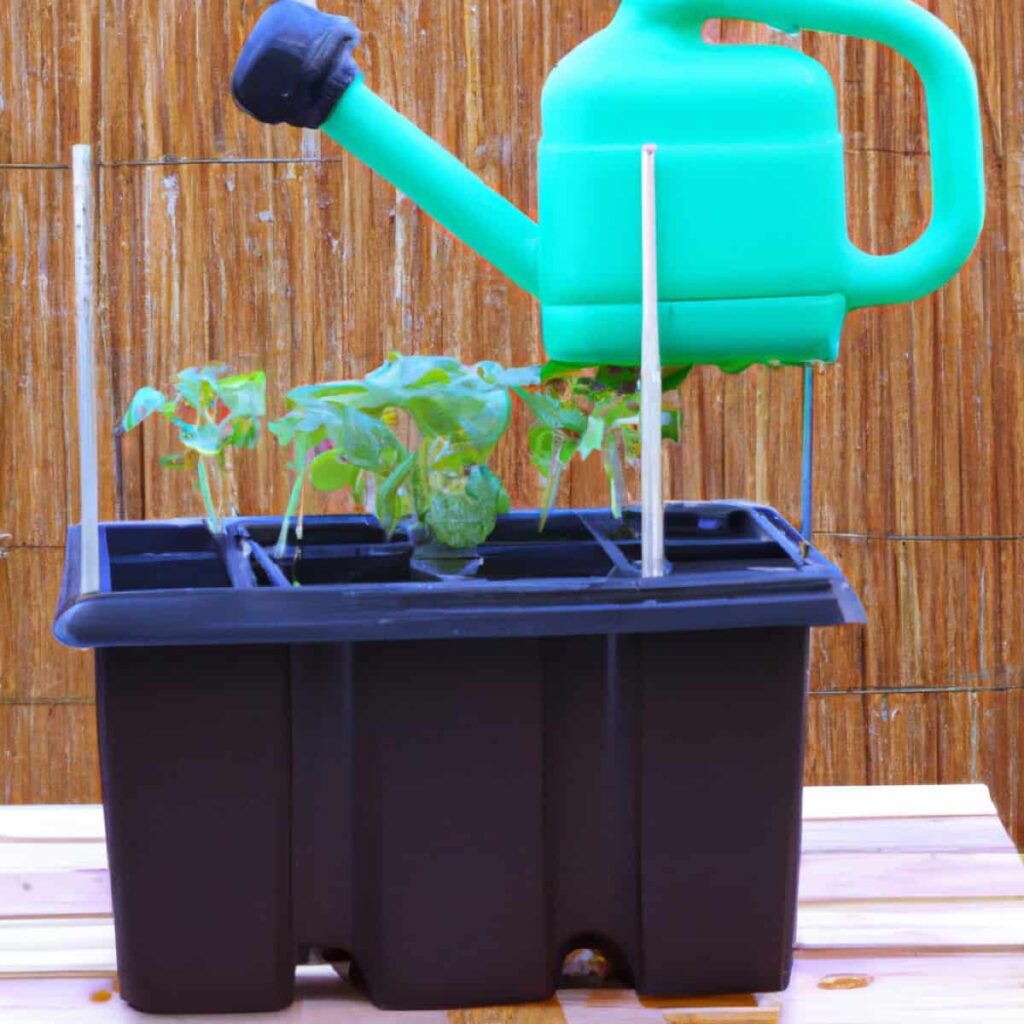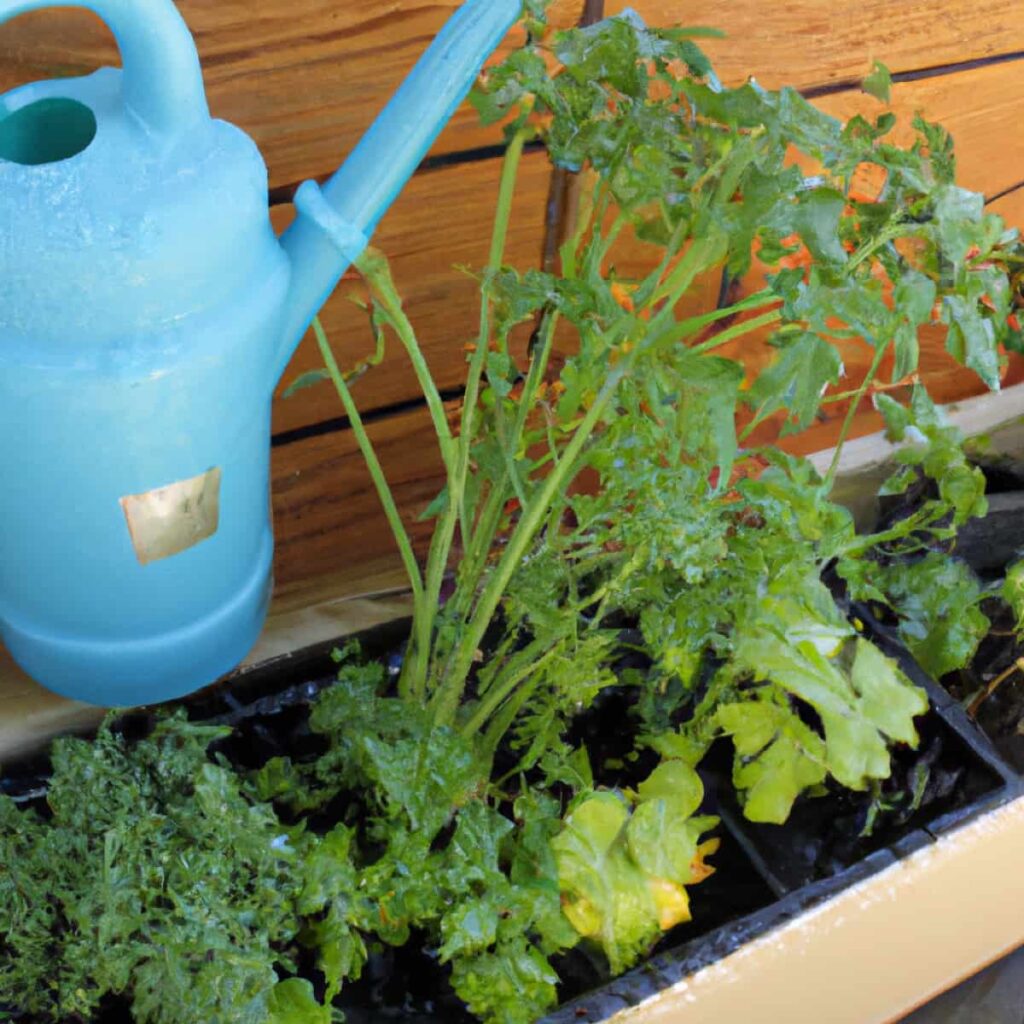Self-watering containers are an excellent way to garden in a small space. They require little maintenance and can be easily moved from one spot to another. These cool-weather gardens require very little maintenance and can provide abundant fresh produce all winter. A self-watering container garden is a great way to enjoy fresh produce all season long without regular watering.

This type of garden uses a system where water is supplied to the plants through their roots rather than traditional irrigation systems. There are many self-watering container gardens, so you can find one that fits your needs and gardening style. Whatever type of self-watering container garden you choose, read the instructions carefully before getting started. The system may require some adjustments at first, but once it’s set up, it should be easy to maintain.
11 Self-watering container gardening ideas
Repurposed soda pop bottles
Whether you’re limited on space or don’t want to fuss with watering, a self-watering planter can be a great solution. First, cut the top of the bottle and remove the cap. Next, make a hole side of the bottle big enough to fit your plant’s root system, leaving at least an inch of space around the hole’s edge so that water doesn’t seep. Finally, fill the bottle with potting soil and place your plant inside. Now all you have to do is water your plants as needed.
DIY wicking bed
One great way to get started with DIY self-watering container gardens is by wicking bed systems. A wicking bed system is a type of garden that relies on indirect water uptake through plant roots to distribute moisture throughout the garden rather than relying on irrigation from a centralized source. This method is especially popular for gardens in periodic droughts or high humidity levels, as it conserves water and helps keep plants healthy.
In case you missed it: Best Root Vegetables for Containers: Fast and Easy to Grow

Self-watering bucket & Styrofoam cup
Container gardening can be a lot of fun but can also be a bit daunting if you don’t have any experience. A self-watering bucket is essential because it allows you to water your plants without going out and getting water every time. The best self-watering buckets have a spout that goes right into the bucket to add water easily. Styrofoam cups are essential because they help retain moisture in the soil.
When you plant your plants in a bucket, the bottom of the cup will become wet, and that moisture will flow into the soil around the roots of your plants. The foam cup will trap that moisture and keep it from flowing away so your plants can grow healthy roots. Once you have your self-watering bucket and Styrofoam cups, you need to plant some vegetables or flowers and let them work their magic.
Inverted planter garden
If you’re looking for a self-watering container garden that you can set up in minutes, try inverted planter gardens. This type of gardening uses pots placed upside down on the ground so the water reservoir sits in the middle of the pot. Inverted planters are also ideal for larger plants that need lots of space, as they take up very little room. To create an inverted planter garden, start by selecting a sturdy container that will hold at least four or five plants. Next, mark the bottom of the container with a line drawn 1/2 inch above the soil surface.
Finally, dig a hole deep enough to place the planter on its side, leaving enough room between the soil and the lip of the pot to allow water drainage. To set up your inverted planter garden, take care to fill in any gaps around the sides of the pot with soil. Then add your plants and water them well. Remember that inverted planters do not require as much water as traditional gardens, only enough to moisten the roots. Once all your plants have grown approximately two feet tall, it is time to switch to a regular watering schedule.
In case you missed it: How to Grow and Care for Brussels Sprouts in Containers: Step-By-Step Planting Process for Beginners

Air conditioner-inspired planter garden
Choose an air conditioner that can be detached from the wall and has easily accessible hoses. Remove the cover of the unit and locate the water reservoir. Mark where the water line intersects the side of the reservoir. Make a hole in the reservoir to match the mark you made earlier, and insert a hose connector. Pull out the hose connector when you’re finished watering your plants.
Reconnect the AC unit to the wall and turn it on to full power. Wait until all the lights in your room have turned off before disconnecting the power cord from your AC unit. Now you can move your air conditioner wherever you want in your room. Place your plants in pots or containers that fit inside the AC unit footprint, making sure to space them evenly, so they don’t get too hot or cold.
Self-watering foam box
These boxes use a porous membrane to collect and hold water, which is then released slowly through small holes in the bottom of the box. This system encourages root growth and helps plants stay hydrated without worrying about irrigation schedules. To set up your self-watering foam box, decide what type of soil you want to use. Most boxes accept potting soil, but if you have very sandy or alkaline soil, you may need to add additional fertilizers or amendments.
Once you’ve selected your soil mix and added any necessary additives, make a hole in the bottom of your chosen container and mix one-part potting soil with two parts water. Add the foaming box to the hole and press it down to submerge the membrane. Water will trickle out from the tiny holes in the bottom of the box and fill up any empty spaces in your potting soil until it reaches the top of the pot. When it’s full, release the pressure on top of the box, and water will continue flowing out for as long as you keep depressing the button.
Five-gallon self-watering container
If you’re looking for a self-watering container gardening idea, you might consider using a five-gallon bucket. This type of container is easy to fill and water and has a built-in drainage system that helps keep your plants healthy. You can also use a five-gallon bucket to grow vegetables, flowers, fruits, or herbs. Select a sturdy bucket that’s big enough to hold your plants and has a deep well in the bottom. Ensure the lid is tight so no water escapes when you’re not tending to your garden.
Before planting, install a sturdy garden hose into a nearby spigot or faucet and connect it to the bucket’s drainage system. This will help regulate the amount of water that flows into and out of your container plants. Start by planting some succulent or cacti plants in the bottom of the bucket so they have plenty of room to grow roots; these plants will tend to store more water than other plants. Add other types of plant seeds closer to the top of the bucket so they can receive more sunlight and rainfall than at the bottom.
In case you missed it: How to Grow and Care for Pansies in Containers: A Beginners Guide

Wooden box
There are many different ideas for making your self-watering container garden, so you’re sure to find one that suits your needs and wants. One popular option is to build raised bed with a water reservoir in the middle. You can buy a prefabricated water reservoir or make one from an old plastic storage container.
Once you have the reservoir, you’ll need to drill holes in the bottom and sides of it big enough for the plant’s roots to grow through. Next, put some drainage holes and place the raised bed on top. Ensure the soil level is at least 1 inch higher than the top of the water reservoir, so water doesn’t pool inside it when it rains.
Wine bottle self-watering hack
These gardens are perfect for people who don’t have a lot of time or outdoor space to dedicate to their plants. All you need is a wine bottle and some soil. To create your self-watering container garden, fill the pot with soil. Plant your chosen plants in the soil, leaving enough room between them so they can water themselves. Once the plants have rooted, water them regularly using the wine bottle as a spout.
Self-watering glass planters
If you’re new to gardening, self-watering containers can be a great way to get started. They’re low-maintenance, so you can focus on enjoying your plants rather than worrying about their water supply. Plus, they’re perfect if you have limited space or want to avoid heavy soils and watering schedules. To create your self-watering glass planter, start by finding an empty water bottle or jar at least 2 inches wide by 4 inches deep. You’ll also need some potting soil and a handful of fresh flowers or succulents.
In case you missed it: 9 Best Berries to Grow in Containers: Well Explained in Simple Steps

Once you’ve collected all the materials, fill the jar half full of water and place it in a sunny spot. Now all you need is another water bottle or jar (or even an old plastic container) about 1 inch taller than the first. Cut off the top of this new jar so that it fits snugly over the mouth of the original one. Push down and fill with potting soil to start your garden.
Super simple DIY self-watering herb garden
Another great way to use an old wine bottle is to make a raised bed using one. Make a hole bottom of the bottle, then use a piece of wood or some other sturdy material to make a raised platform inside it. Add some soil and plants, then fill up the rest of the bottle with water. When it’s time to water your plants, pour water onto the bed through the hole in the bottom of the bottle and watch as it travels down into the soil beneath.
In case you missed it: 18 Best Vines and Climbers for Containers

Conclusion
Gardening can be a great way to get your hands dirty and spend quality time outdoors. But if you’re looking for something that’s easy and doesn’t require much maintenance, you may consider a DIY self-watering container garden. These gardens are perfect for people who don’t have a lot of time or space to work in their gardens, and they also require very little water once they are set up. Not only will these gardens be easy to set up and maintain, but they’ll also provide you with plenty of fresh produce all year.
- Flower Garden Designs and Layouts for Beginners
- Planting and Spacing Techniques in Papaya: A Beginner’s Guide
- Growing Gold: Essential Techniques for Planting Pineapples
- How to Make Kalanchoe Plant Bushy: Home Remedies and Solutions
- 11 Reasons Why Your Gardenia is Not Blooming: Home Remedies and Solutions
- Eco Elegance: The Guide to Designing a Drought-Tolerant Landscape
- Gardening on a Slope: Strategies for Hillside Landscaping
- Nourish and Flourish: Top Organic Mulches for Thriving House Plants
- Everything You Want to Know about Indian Mogra Flower: Discover Uses and Growing
- Green Thumb Success: Expert Tips for Cultivating Greenhouse Pumpkins All Year Round
- Maximize Growth & Flavor: The Ultimate Guide to Companion Planting in Herb Gardens
- How to Control Rhododendron Problems Naturally: Home Remedies and Organic Ways to Fix Them
- Natural Magic: The Remarkable Benefits of Cinnamon for Plants
- Best Steps to Revive Dying Tulip with Natural and Organic Treatment
- 10 Reasons Why Your Angel Trumpet is Not Blooming: Remedies and Treatment
- How to Fix Periwinkle Leaf and Flower-Related Problems: Natural Remedies and Solutions
- How to Fix Zinnias Leaf and Flower Problems: Discover Natural and Home Remedies
- Organic Steps to Induce Lemon Tree Flowers: A Comprehensive Guide
- Bloom Booster: Crafting the Perfect Homemade Bougainvillea Fertilizer
- Optimizing Growth: A Guide to Applying NPK Fertilizer for Potted Plants
- 10 Best Homemade Fertilizers for Rubber Plant: DIY Recipes and Application Method
- How to Boost Female Pumpkin Flowers: Effective Steps for More Flowers and High Yields
- Transform Your Indoor Garden: Top Benefits of Pink Salt for Houseplants
- 10 Best Homemade Fertilizers for Peacock Plants (Calathea): Easy DIY Guide
- Unlock Blooms: 9 Reasons Why Your Potted Chrysanthemum is Not Blooming
- 8 Reasons Why Your Potted Hibiscus is Not Blooming: Fix it with Simple Solutions
- Unlock Blooms: 9 Key Reasons Your Potted Frangipani Won’t Flower
- 10 Reasons Why Is My Ice Plant Not Blooming: Remedies and Treatment
- 10 Reasons Why My Potted Hydrangea Not Blooming: Treatment and Remedies
- 10 Reasons Why is My Wisteria Not Blooming: Remedies and Treatment
- 10 Reasons Why is My Goldfish Plant Not Blooming: Remedies and Treatment
- Maximize Your Space: Ultimate Guide to Balcony Gardening with Grow Bags
- 10 Reasons Why Your Iris is Not Blooming: Remedies and Treatment
- 10 Reasons Why Your Anthurium Plant is Not Blooming: Treatment and Remedies
- 10 Reasons Why Your Aquaponic Plants Are Not Flowering: Remedies and Treatment
- 10 Reasons Why Your Agapanthus is Not Flowering: Remedies and Treatment